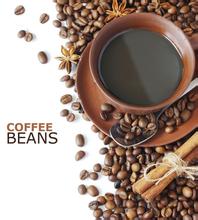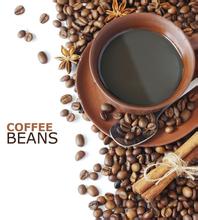Coffee producing area and coffee flavor introduction what kind of coffee producing area produces better coffee?
Coffee comes from coffee beans, which in turn are harvested and processed from the fruits of trees. Coffee trees grow in the equator as the center, between 25 degrees north and south latitude, known as the tropical or subtropical countries home to coffee belt, coffee production countries currently have about more than 60 countries, coffee production areas distributed in South America, Central America, West Indies, Asia, Africa, Arabia, South Pacific and Oceania and other regions, and in terms of output, accounting for the world's first output is Brazil, accounting for about 30%, the second is to Colombia as the center of Central and South America, followed by Africa, The remaining 10% is distributed in Asia and the islands.
Coffee beans on the market are mainly Arabica (Coffea Arabica) and Robasta (Coffea Robusta) two original species. The plants, cultivation methods, environmental conditions, appearance, chemical composition and even processing methods of the subsequent green beans of the two coffee beans are different. Each of them can be subdivided into more varietal branches. Coffee beans circulating in the market are mostly distinguished by their origin.
Asia
Indonesia (Indonesia)
Well-known representative coffee: Java, Sumatra Mandheling
India (India)
Famous representative coffee: Monsooned Malabar
Vietnam (Vietnam)
Famous representative coffee: Vietnamese coffee
Africa
Yemen
Famous representative coffee: Mocha Mattari
Ethiopia
Well-known representative coffee: Mocha Harra, Yirgacheffe
Ivory Coast (Ivory Coast)
Well-known representative coffee: None
Kenya (1998 - 1999)
Famous representative coffee: Kenya AA
United Republic of Tanzania
Famous representative coffee: Kilimanjaro
Zimbabwe
Famous representative coffee: Chipinge
Malawi
Famous representative coffee: Malawi
Central America
Guatemala
Famous representative coffee: Antigua, Huehuetenango
Costa Rica
Well-known representative coffee: Tarrazu
Nicaragua
Well-known representative coffee: Nicaragua
Honduras
Famous representative coffee: Honduras
Panama (Panama)
Famous representative coffee: Panama
El Salvador
Famous representative coffee: El Salvador
Mexico (Mexico)
Famous representative coffee: Mexico
South America
Brazil (Brazil)
Famous representative coffee: Santos
Peru (Peru)
Famous representative coffee: Peru
Ecuador
Famous representative coffee: Galapagos
Oceania
New Guinea
Famous representative coffee: New Guinea
Australia (Australia)
Famous representative coffee: Australian coffee
Caribbean
Hawaii
Well-known representative coffee: Kona
Jamaica
Famous representative coffee: Blue Mountain
Puerto Rico
Well-known representative coffee: Puerto Rico
Dominican Republic
Famous representative coffee: Santo Domingo
Caribbean-Dominican Republic
Famous representative coffee: Santo Domingo
Dominica is located on the island of Hispaniola in Central America, just above Martinique.
Dominica occupies the right two-thirds of Hispaniola and the western one-third of Haiti. It is rich in natural resources, rich in coffee, cocoa, citrus, bananas and flowers.
In recent years, coffee ranks second in the country's gross domestic product (GDP), second only to rice, and is an important cash crop in the country.
Dominican coffee, like Puerto Rico and Jamaica coffee, is Caribbean coffee, with similar qualities, but less famous, mainly because of the way the coffee is handled rather than the quality of the coffee berries.
Dominican coffee is grown in upland and lowlands and tastes slightly different. Highland plants tend to be sour, but taste richer; lowland plants are less sour and taste smoother.
In recent years, fine coffee is popular. Some Dominican farms produce high-quality coffee beans with rich aroma, mellow taste and moderately bright acidity. It is not far from the more famous Puerto Rico beans or Jamaica beans. It is also worth tasting coffee

Important Notice :
前街咖啡 FrontStreet Coffee has moved to new addredd:
FrontStreet Coffee Address: 315,Donghua East Road,GuangZhou
Tel:020 38364473
- Prev

What are the main coffee producing areas? where is the origin of famous coffee?
Coffee comes from coffee beans, which are harvested and processed from the fruit of trees. Coffee trees grow at the center of the equator, between latitudes of 25 degrees south and north, and are called the homes of tropical or subtropical countries called coffee belts. At present, there are about 60 coffee-producing countries. Coffee is produced in South America, Central America, the West Indies, Asia, Africa, Arabia, the South Pacific and
- Next

How many days can roasted coffee beans be kept? Coffee origin
Roasted coffee can be placed for more than a year if it is not exposed to sunlight, but the taste will change. Roasted coffee is best based on the roasting date. It is recommended not to put too much in a month or it will mold. Remember not to exceed a year. However, it is best to use it within half a year. The roasting degree is slightly stronger than the medium and deep roasting degree. The color becomes quite dark. The bitterness is stronger. It belongs to the middle and south.
Related
- Does Rose Summer choose Blue, Green or Red? Detailed explanation of Rose Summer Coffee plots and Classification in Panamanian Jade Manor
- What is the difference between the origin, producing area, processing plant, cooperative and manor of coffee beans?
- How fine does the espresso powder fit? how to grind the espresso?
- Sca coffee roasting degree color card coffee roasting degree 8 roasting color values what do you mean?
- The practice of lattes: how to make lattes at home
- Introduction to Indonesian Fine Coffee beans-- Java Coffee producing area of Indonesian Arabica Coffee
- How much will the flavor of light and medium roasted rose summer be expressed? What baking level is rose summer suitable for?
- Introduction to the characteristics of washing, sun-drying or wet-planing coffee commonly used in Mantenin, Indonesia
- Price characteristics of Arabica Coffee Bean Starbucks introduction to Manning Coffee Bean Taste producing area Variety Manor
- What is the authentic Yega flavor? What are the flavor characteristics of the really excellent Yejasuffi coffee beans?

